, 0°
Wind: mph,
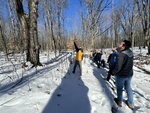
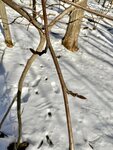
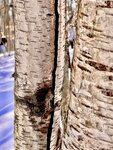
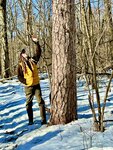
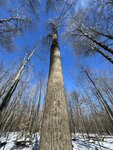
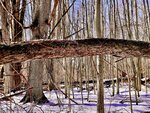
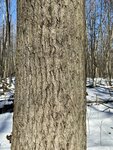
By MEGAN BARRON
Cleaver Guest Writer
HARRISON – With all the warm weather and sunshine, Punxsutawney Phil may be on to something with his prediction for an early spring this year. Feb. 2, Groundhog Day, proved to be an excellent day for a hike through the trail system at Mid Michigan College in Harrison.
Joe Nash, the local forester servicing the Clare and Gladwin Conservation districts, led another extraordinary class and hike for the community. His zest and fervor for his livelihood is woven into his essence, as well as his curriculum. Following his class on foraging for wild edibles, which took place last summer, Nash recently hosted a winter tree identification hike for his second year in a row at the Poet Family Outdoor Education Center. As with the foraging for wild edibles event, the winter tree identification event curriculum was designed by Nash himself as an outreach program for the community he so passionately serves.
“Being able to identify trees and shrubs in the winter is important because often much of ‘nuts and bolts’ of forest management happens in winter,” Nash explained.
“Harvests are commonly done in the winter to minimize soil disturbance,” he said. “It is also a great time to survey a forest and get a good read on the landscape because we can see through the woods without all the leaves on. Another good reason is that some trees and shrubs have relevant uses in the winter – if you can find them. Highbush cranberry, for example, holds onto the berries after it has dropped its leaves. Black cherry inner bark can be harvested (responsibly) for a medicinal cough syrup tincture during the winter, and similarly the inner bark of willows have a compound called salicin – willow bark has long been used as an anti-inflammatory much like aspirin.
“Not to mention that if you are hoping to tap maple trees for syrup in the early spring, you better be confident you are indeed tapping a maple – and even better if you can confidently tap a sugar or black maple (species with higher sugar contents in their sap),” he said, relaying some examples and rationale pertaining to the skill.
Nash is a spring of knowledge in his field and a prime resource as an educator due to the ease in his presentation and communication with the community. The classroom portion is clear and concise, welcoming any questions and interaction from those in attendance. Nash’s curriculum is designed to benefit community members both new and well versed in the content area. For the kinesthetic learner out there, Nash prioritizes saving a larger portion of the class for time on the trail for application and enrichment of his classroom content.
While the classroom portion is a fantastic introduction to his guided hike, Nash exudes inexplicable enthusiasm and is clearly in his element out in the forest. Within the stops he has plotted along the trail, it is joyous to watch as he finds other fascinating landmarks that pique interest amidst conversation and questions throughout the hike. His bag is full of fun and quirky tips and tricks to help remember the aesthetic of varying trees and shrubs, such as describing the bark of the black cherry (Prunus serotina) as resembling burnt potato chips. He is also extremely conscientious of plotting out a hiking trail that is relatively flat to be sure the class is as welcoming as possible to all community members.
If you were unable to attend his recent winter tree identification hike, Nash has many upcoming events the community can look forward to. He will be hosting a tree pruning workshop sometime in March at the Fruitful Orchard in Gladwin, a foraging presentation at the Master Gardener’s Earth Day Celebration at Gladwin High School, and several foraging workshops this spring. Once finalized, details on upcoming events will be available on the Clare Conservation District Facebook page and website (www.clarecd.org).
The Clare Conservation District is also hosting its annual native tree and plant sale. Catalogs and order forms have been mailed out to the community and can also be found for download at the Clare Conservation District website (www.clarecd.org).
“We were able to add to the plant sale this year native Michigan species that have edible uses for humans as well as wildlife,” Nash noted enthusiastically. “Notably the Michigan paw paw (which we are at the northern range of), American hazelnut, serviceberry, highbush cranberry, and elderberry.”
Nash is available as a resource to help with any questions community members may have regarding their property or conservation programs and remains available for free on-site property evaluations. Nash is also open for input from community members on ideas or interest for future forestry and ecology events or topics they would like to see in the community.
“I'm always eager to get community input because these events are intended to benefit folks in the community and that is more successful if I know what people want to see or do,” he said. “It could be anything from a simple guided hike to a mushroom ID course, to a discussion on current forest ecology research. I'm always looking for events to host that people will be excited to attend.”
Please feel free to reach out to local forester Joe Nash at joe.nash@macd.org.
© Clare County Cleaver
Comments
No comments on this item Please log in to comment by clicking here